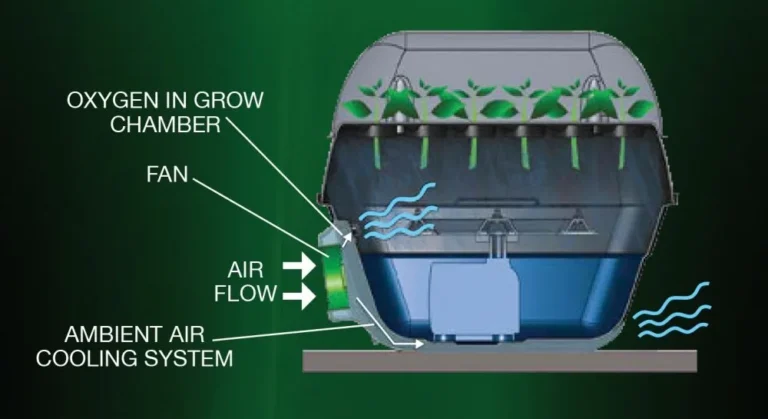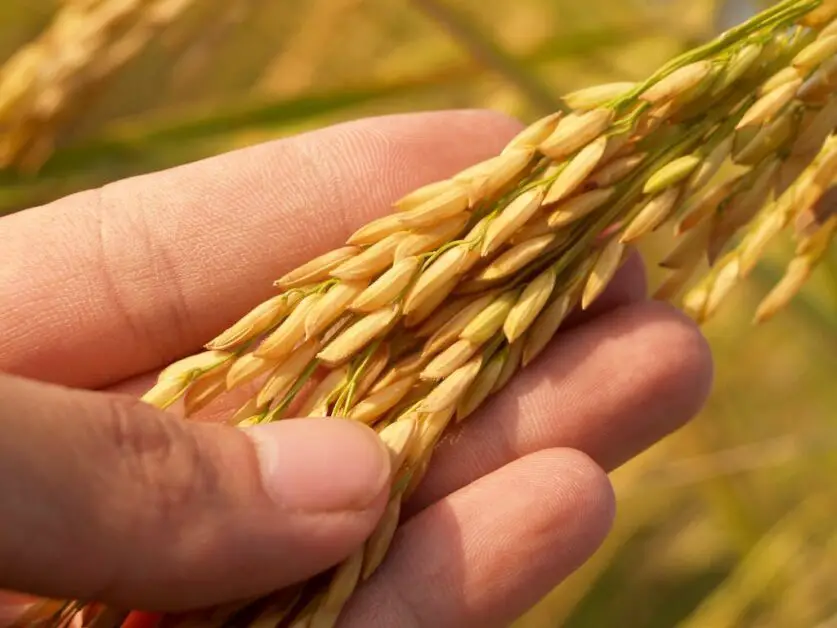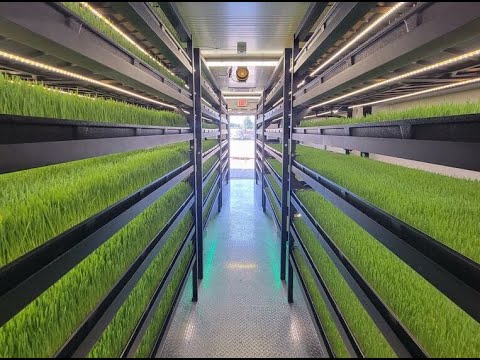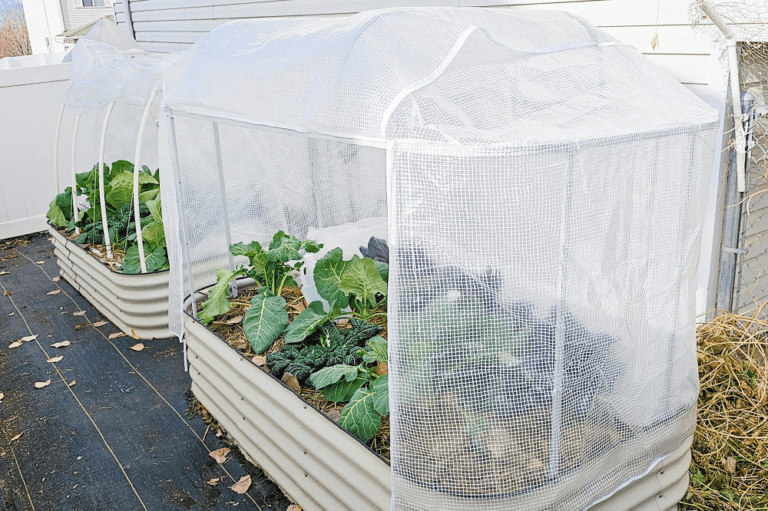18 Cover Crops for Raised Beds: the ultimate guide
Table of Contents
Benefits of Using Cover Crops
Cover crops offer a multitude of benefits that can significantly enhance the health and productivity of your soil. By planting cover crops, you can improve soil structure, increase organic matter content, and enhance nutrient cycling. These crops act as living mulches, protecting the soil from erosion and compaction, while also suppressing weeds naturally. The diverse root systems of cover crops help break up hardpan, aerate the soil, and promote beneficial microbial activity, creating a more hospitable environment for plant growth. Overall, incorporating cover crops into your gardening practices can lead to healthier plants, improved yields, and a more sustainable ecosystem.
Additionally, cover crops play a vital role in mitigating environmental impacts by reducing nutrient runoff, enhancing water infiltration, and supporting biodiversity. They can contribute to pest management by attracting beneficial insects that prey on harmful pests, reducing the need for synthetic pesticides. These crops also offer a buffer against extreme weather conditions and help conserve moisture in the soil, making them a valuable tool for climate-resilient agriculture. With their ability to improve soil health, protect natural resources, and promote sustainable farming practices, cover crops are an essential component of a holistic approach to gardening and agriculture.

Best Cover Crops for Nitrogen Fixation
Nitrogen fixation is a crucial process in agriculture, as it allows plants to access this essential nutrient for growth and development. When selecting cover crops for nitrogen fixation, legumes are the go-to choice due to their unique ability to form symbiotic relationships with nitrogen-fixing bacteria in the soil. Legume cover crops such as clover, vetch, and peas have specialized root nodules that house these beneficial bacteria, converting atmospheric nitrogen into a form that plants can readily utilize.
By incorporating legume cover crops into your crop rotation or garden bed, you can enhance soil fertility naturally and reduce the need for synthetic nitrogen fertilizers. Not only do legumes contribute nitrogen to the soil, but they also improve soil structure, increase organic matter content, and support beneficial soil organisms. Additionally, the presence of legume cover crops can suppress weeds, making them an eco-friendly and sustainable choice for boosting plant health and productivity in your growing space.
Cover Crops for Weed Suppression
Cover crops play a vital role in weed suppression within gardening and agricultural practices. Through their ability to outcompete unwanted plant species for resources such as nutrients, light, and water, cover crops can effectively reduce weed populations and limit their growth. This natural weed management strategy not only helps in controlling weed infestations but also contributes to the overall health and productivity of the soil.
Incorporating cover crops specifically chosen for their weed-suppressing properties can offer a sustainable and environmentally friendly solution to weed control. Species like rye, oats, hairy vetch, and crimson clover are known for their allelopathic effects, which involve releasing biochemical compounds that inhibit the germination and growth of weeds. By selecting the right cover crops and understanding their mechanisms of weed suppression, gardeners can enjoy a cleaner and more prosperous growing environment while minimizing the need for synthetic herbicides.

Cover Crops for Soil Erosion Control
Soil erosion is a significant concern for gardeners and farmers alike, as it can lead to the loss of valuable topsoil and nutrients essential for plant growth. Choosing the right cover crops can play a crucial role in controlling soil erosion and preserving the health of the soil. Certain cover crops have extensive root systems that help bind the soil together, reducing the risk of erosion from wind and water.
Additionally, these cover crops act as a protective blanket over the soil, shielding it from the impact of heavy rain and harsh weather conditions. By incorporating cover crops specifically selected for their erosion-fighting properties, gardeners can effectively mitigate the risk of soil loss and maintain the fertility of their land for years to come.
One popular cover crop known for its effectiveness in controlling soil erosion is winter rye. Winter rye grows quickly, establishing a dense root system that holds the soil in place even during periods of heavy rainfall. Its vigorous growth helps stabilize slopes and bare areas prone to erosion, making it an excellent choice for areas at risk of soil loss. Moreover, winter rye can be easily incorporated into crop rotation schedules, providing additional benefits such as weed suppression and nutrient cycling. By strategically integrating winter rye and other suitable cover crops into their cultivation practices, gardeners can proactively combat soil erosion and promote the long-term sustainability of their agricultural endeavors.
Cover Crops for Adding Organic Matter
Cover crops are a valuable tool for improving soil health and fertility in any garden or agricultural setting. When it comes to adding organic matter to the soil, certain cover crops excel in enhancing soil structure and providing essential nutrients for plant growth. Legume cover crops, such as hairy vetch and crimson clover, are known for their ability to fix nitrogen from the atmosphere into the soil, making it more readily available for subsequent crops. These legumes not only enrich the soil with organic matter but also improve its overall health and fertility.
In addition to legumes, grass cover crops like annual ryegrass and cereal rye are excellent choices for adding organic matter to the soil. Their extensive root systems help break up compacted soil, enhance soil aeration, and increase microbial activity, all of which contribute to building organic matter content. Grass cover crops also provide a protective cover on the soil surface, preventing erosion and nutrient leaching while adding valuable organic material as they decompose. By incorporating legumes and grasses into your cover crop rotation, you can effectively boost organic matter levels in the soil, leading to healthier, more productive plants in the long run.
Legume Cover Crops for Enriching Soil
Legume cover crops are a valuable addition to any gardening or farming operation looking to enhance soil health and fertility. Legumes have a unique ability to fix nitrogen from the atmosphere into a form that plants can readily absorb, reducing the need for synthetic nitrogen fertilizers. This process not only benefits the legume plants themselves but also provides a natural source of nitrogen for neighboring crops, promoting overall soil enrichment.
Moreover, legume cover crops help in improving soil structure by enhancing soil aggregation and increasing organic matter content. By adding organic matter to the soil, legume cover crops contribute to improved soil moisture retention, nutrient availability, and overall soil health. Their deep root systems can also help break up compacted soil layers, improving water infiltration and reducing erosion. Overall, integrating legume cover crops into your rotation can lead to healthier soils, increased crop productivity, and long-term sustainability.

Grass Cover Crops for Improving Soil Structure
Grass cover crops play a vital role in enhancing soil structure in gardening and agricultural practices. Their fibrous root systems help break up compacted soil, improving aeration and drainage while promoting better water infiltration. Additionally, the deep-reaching roots of grass cover crops assist in preventing soil erosion by binding the soil particles together, reducing the risk of nutrient loss and topsoil runoff.
The organic matter generated from the decomposition of grass cover crops further contributes to soil health and fertility, enhancing microbial activity and nutrient cycling. As a result, the improved soil structure allows for better root penetration and nutrient uptake by plants, leading to increased crop productivity and overall garden success. Consider incorporating grass cover crops like annual ryegrass, sudangrass, or oats to reap the benefits of enhanced soil structure and health in your gardening endeavors.
Winter Cover Crops for Protecting Soil
Winter cover crops play a crucial role in protecting soil health during the colder months when the ground is often left bare and vulnerable to erosion. By planting cover crops like winter rye, hairy vetch, or crimson clover, gardeners can help prevent soil compaction, nutrient leaching, and runoff, thus preserving the integrity of their soil. These cover crops act as a protective blanket, shielding the earth from harsh winter weather while also enhancing microbial activity and nutrient availability for the upcoming growing season.
In addition to safeguarding soil from erosion, winter cover crops can also contribute to weed suppression, improve soil structure, and increase organic matter content. By forming a dense vegetative cover, these crops outcompete weeds for resources, reduce soil erosion caused by wind and water, and enhance soil aggregation. Moreover, as winter cover crops decompose, they release valuable nutrients back into the soil, fostering a healthier and more fertile planting environment for future crops.
Summer Cover Crops for Maximizing Growth
When it comes to maximizing growth in your summer garden, selecting the right cover crops can make a significant difference in achieving healthy and flourishing plants. Summer cover crops not only help to suppress weeds and improve soil fertility but also play a crucial role in enhancing overall plant growth and productivity.
One excellent option for summer cover crops is buckwheat (Fagopyrum esculentum), a fast-growing plant known for its ability to quickly establish and provide abundant biomass. Buckwheat is a popular choice for maximizing growth during the summer months due to its profuse root system that helps break up compacted soil, improve drainage, and enhance nutrient uptake by surrounding plants. Additionally, buckwheat attracts pollinators and beneficial insects, making it a valuable addition to any summer garden seeking to boost overall plant health and productivity.

Fast-Growing Cover Crops for Quick Results
When time is of the essence and you need quick results in your garden, fast-growing cover crops are your go-to solution. These crops not only provide rapid coverage of the soil but also offer numerous other benefits that can enhance the health of your garden. One excellent choice for rapid growth is buckwheat, which can germinate in as little as three days and reach maturity within 30-40 days, making it a perfect option for filling empty spaces in your garden quickly.
Another fast-growing cover crop that can provide quick results is daikon radish. Known for its ability to break up compacted soil, daikon radish can germinate in as little as three days and reach maturity within 30-40 days, making it an ideal choice for improving soil structure and suppressing weeds in a short amount of time. By incorporating these fast-growing cover crops into your garden rotation, you can enjoy the benefits of improved soil health and weed suppression without having to wait long for noticeable results.
Low-Maintenance Cover Crops for Busy Gardeners
For busy gardeners looking to incorporate cover crops into their gardening routine, opting for low-maintenance varieties can be a game-changer. These cover crops require minimal attention and effort, making them ideal for those with limited time to devote to their garden. Examples of low-maintenance cover crops include clover, buckwheat, and annual ryegrass, which are not only easy to plant but also offer benefits such as weed suppression and soil improvement.
By choosing low-maintenance cover crops, busy gardeners can still reap the rewards of healthier soil and better garden productivity without the need for constant monitoring and care. These cover crops can be sown quickly and require little maintenance throughout their growth cycle, making them a practical choice for those looking to simplify their gardening tasks. Integrating these low-maintenance options into your gardening routine can provide numerous benefits with minimal effort, allowing you to enjoy a thriving garden even amidst a busy schedule.
Cover Crops for Attracting Beneficial Insects
One of the lesser-known benefits of cover crops is their ability to attract beneficial insects to your garden. By planting specific cover crops that provide food and habitat for these helpful bugs, you can create a more balanced and biodiverse ecosystem that naturally controls pests and promotes plant health.
Certain cover crops, such as buckwheat, clover, and dill, are known for their ability to attract beneficial insects like ladybugs, lacewings, and parasitic wasps. These insects prey on common garden pests, such as aphids and caterpillars, helping to keep your plants healthy without the need for chemical pesticides. By incorporating cover crops that attract beneficial insects into your garden rotation, you can support a thriving community of natural pest controllers while also improving soil health and fertility.
Cover Crops for Disease Prevention
Utilizing cover crops for disease prevention in your garden can be a proactive and sustainable approach to safeguarding the health of your plants. Certain cover crops possess natural defenses against common plant diseases, acting as a protective barrier for your garden ecosystem. By incorporating disease-resistant cover crops into your crop rotation strategy, you can help mitigate the risk of pathogens taking hold in your soil.
Legume cover crops, such as clover and vetch, are known for their ability to fix nitrogen and enhance soil health, thereby improving plant resilience against diseases. Additionally, cover crops like marigolds and mustard greens contain compounds that exhibit antimicrobial properties, helping to suppress harmful pathogens in the soil. By selecting cover crops with these disease-fighting qualities, you can proactively reduce the prevalence of plant diseases in your garden, fostering a thriving and disease-resistant environment for your crops to flourish.
| Cover Crop | Benefits |
|---|---|
| Mustard | Suppresses soil-borne pathogens such as nematodes, fungi, and bacteria. Releases biofumigants that help control pests and diseases. Improves soil structure and fertility. Quick-growing and easily incorporated into the soil. |
| Oats | Acts as a natural biofumigant, releasing compounds that suppress soil-borne diseases and pests. Provides weed suppression and erosion control. Improves soil structure and adds organic matter when incorporated. Tolerates cooler temperatures and grows well in a wide range of soil types. |
| Buckwheat | Attracts beneficial insects such as ladybugs and hoverflies that feed on pests like aphids and caterpillars. Suppresses weeds with its rapid growth and dense foliage. Releases allelopathic compounds that inhibit the growth of certain weeds and pathogens. Improves soil health by adding organic matter and enhancing soil structure. |
| Radish | Breaks up compacted soil with its deep taproot, improving soil aeration and drainage. Suppresses weeds with its rapid growth and shading effect. Biofumigant properties help control soil-borne pests and diseases. Adds organic matter and nutrients to the soil when incorporated. |
| Crimson Clover | Fixes nitrogen in the soil, improving soil fertility and reducing the need for synthetic fertilizers. Suppresses weeds with its dense foliage and shading effect. Attracts pollinators and beneficial insects. Enhances soil structure and adds organic matter when incorporated. |
| Annual Ryegrass | Builds soil structure with its extensive root system, reducing erosion and improving water infiltration. Suppresses weeds with its dense growth and shading effect. Provides nitrogen scavenging, reducing leaching and runoff of excess nutrients. Adds organic matter when incorporated into the soil. |
These cover crops offer a range of benefits for disease prevention and soil improvement in agricultural systems. Integrating them into crop rotation plans can contribute to sustainable and resilient farming practices.
Cover Crops for Drought Tolerance
Cover crops play a vital role in enhancing soil health and resilience, especially in times of drought. Selecting the right cover crops can help mitigate the effects of water scarcity, ensuring that your garden remains healthy and productive. Leguminous cover crops such as clover and vetch are excellent choices for drought tolerance, as they have deep root systems that can access water from lower soil layers, reducing the impact of dry spells on plant growth.
Additionally, grass cover crops like annual ryegrass and sorghum-sudangrass can also be beneficial for drought-prone areas, as their extensive root systems improve soil structure and water infiltration, helping to retain moisture during periods of low rainfall. By incorporating these cover crops into your gardening practices, you can build a more resilient ecosystem that thrives even in challenging environmental conditions.

Cover Crops for Improving Water Retention
When it comes to improving water retention in your garden, selecting the right cover crops can make a significant difference. Certain cover crops have the ability to enhance the soil’s ability to hold onto moisture, thereby reducing the frequency of watering needed for your plants. Legume cover crops, such as clover and vetch, are known for their ability to improve water retention in the soil by increasing organic matter content and promoting soil structure.
In addition to legumes, grass cover crops like rye and barley can also play a crucial role in improving water retention. Their extensive root systems help to create channels in the soil that allow water to penetrate deeper, reducing runoff and maximizing moisture absorption. By incorporating a mix of legume and grass cover crops into your garden, you can create a more resilient and drought-tolerant environment for your plants, ultimately leading to healthier and more vibrant growth.
How to Select the Right Cover Crops for Your Raised Beds
When selecting cover crops for your raised beds, it’s essential to consider your specific gardening needs and goals. Start by determining the primary benefit you want to achieve with your cover crop – whether it’s nitrogen fixation, weed suppression, soil erosion control, or another purpose. Different cover crops offer various advantages, so understanding your objectives is key to making the right choice. Additionally, consider the growing season and climate in your region to ensure that the cover crop you select will thrive in your raised beds.
Next, take into account the practical aspects of managing the cover crop in your raised beds. Factors such as growth rate, maintenance requirements, and compatibility with your existing plants should all be considered. Some cover crops may require regular mowing or tilling, while others can be left to grow with minimal intervention. By selecting cover crops that align with your gardening practices and lifestyle, you can ensure a successful and harmonious integration of cover crops into your raised bed gardening routine.
How do I know which cover crops are best for my specific raised bed garden?
Consider factors such as your soil type, climate, and specific goals for your garden (such as nitrogen fixation, weed suppression, or soil erosion control) when selecting cover crops for your raised beds.
Can I mix different types of cover crops in the same raised bed?
Yes, you can mix different types of cover crops in the same raised bed to achieve multiple benefits such as increased organic matter, improved soil structure, and attracting beneficial insects.
How often should I rotate cover crops in my raised beds?
It is recommended to rotate cover crops in your raised beds every growing season to prevent nutrient depletion and pest buildup while maintaining soil health.
Are there any cover crops that can be planted year-round in raised beds?
Yes, there are winter cover crops that can protect soil during the colder months and summer cover crops that can maximize growth during the warmer months in raised beds.
Can cover crops help prevent diseases in my raised bed garden?
Yes, certain cover crops have been shown to suppress soil-borne diseases and promote overall plant health in raised bed gardens.
Do cover crops require a lot of maintenance in raised beds?
Some cover crops are low-maintenance and can be easily incorporated into raised bed gardens without the need for extensive care or attention from busy gardeners.

Beck Wakeford is a dedicated writer at SouthElMonteHydroponics, with a fervent enthusiasm for agriculture and technological innovation. Armed with a degree in Agricultural Engineering from a leading university, Beck specializes in hydroponic systems design, automation, and optimization. Their passion for merging traditional farming with cutting-edge technology drives them to explore novel solutions for sustainable food production. Beck’s expertise and keen interest in the intersection of engineering and agriculture make them a valuable asset in the quest for efficient and eco-friendly farming practices. Through their writing, Beck aims to inspire others to embrace the potential of hydroponics in shaping a more sustainable future.







